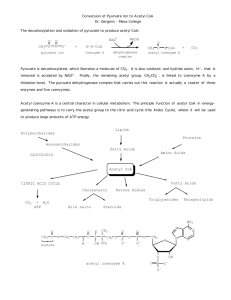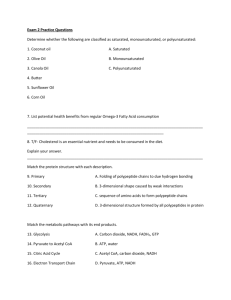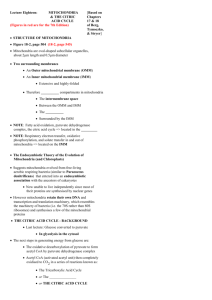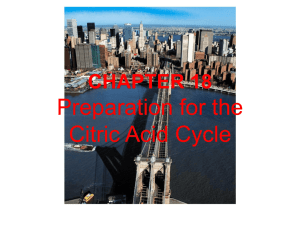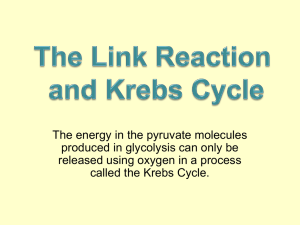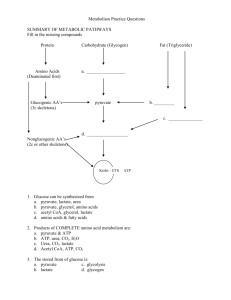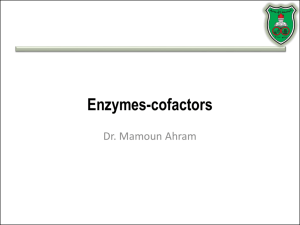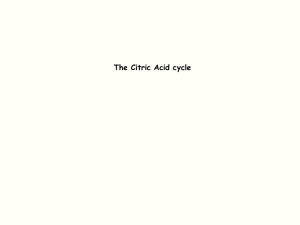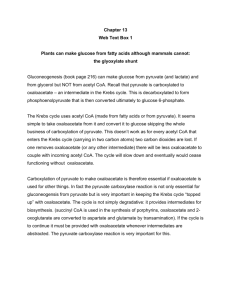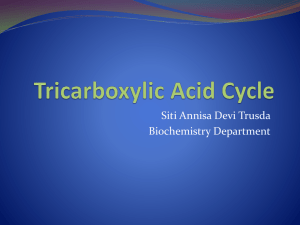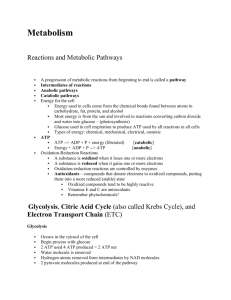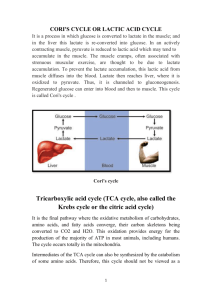KREBS CYCLE WITH MOLCULAR MODELS
advertisement
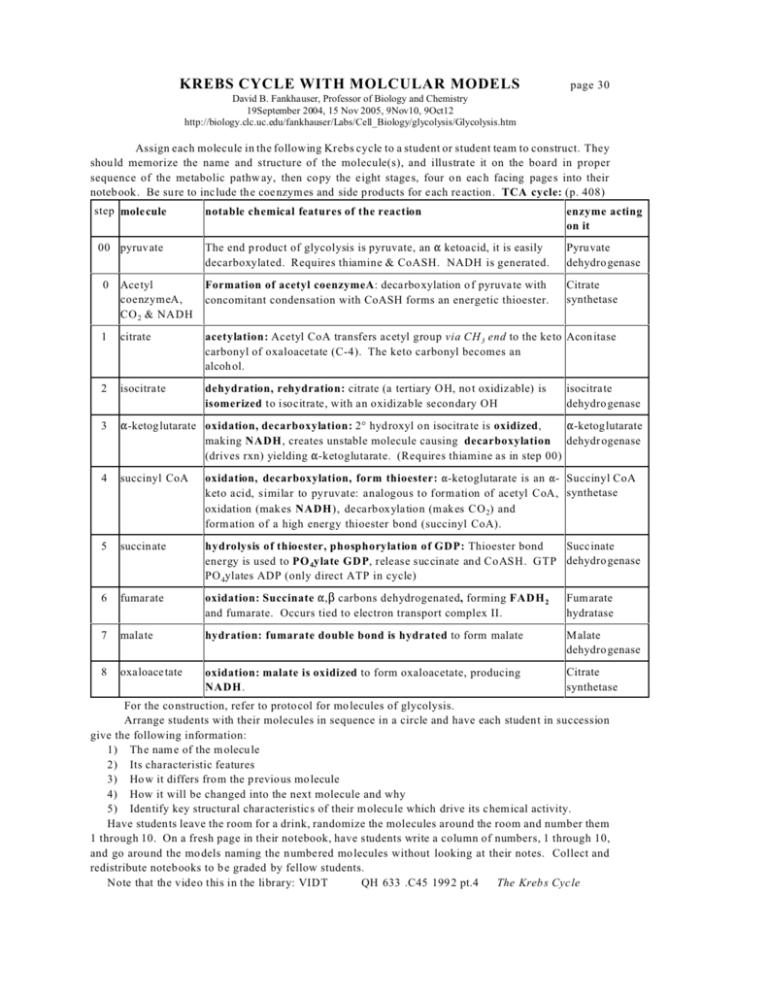
KREBS CYCLE WITH MOLCULAR MODELS page 30 David B. Fankhauser, Professor of Biology and Chemistry 19September 2004, 15 Nov 2005, 9Nov10, 9Oct12 http://biology.clc.uc.edu/fankhauser/Labs/Cell_Biology/glycolysis/Glycolysis.htm Assign each molecule in the following Krebs cycle to a student or student team to construct. They should memorize the name and structure of the molecule(s), and illustrate it on the board in proper sequence of the metabolic pathw ay, then co py the eight stages, four on each facing page s into their noteb ook . Be su re to include the coe nzymes and side products for each reaction. TCA cycle: (p. 408) step molecule 00 pyruvate notable chemical features of the reaction enzyme acting on it The end p roduct of glycolysis is pyruvate, an " ketoacid, it is easily decarboxylated. Requires thiamine & CoASH. NADH is generated. Pyruvate dehydro genase Citrate synthetase 0 Acetyl coenzymeA, CO 2 & NADH Formation of acetyl coenzymeA: decarboxylation o f pyruvate with concomitant condensation with CoASH forms an energetic thioester. 1 citrate acetylation: Acetyl CoA transfers acetyl group via CH 3 end to the keto Acon itase carbonyl of oxaloacetate (C-4). The keto carbonyl becomes an alcoh ol. 2 isocitrate dehydration, rehydration: citrate (a tertiary O H, no t oxidizable) is isomerized to isocitrate, with an oxidizable secondary OH 3 "-ketoglutarate oxidation, decarboxylation: 2° hydroxyl on isocitrate is oxidized, 4 succinyl CoA oxidation, decarboxylation, form thioester: "-ketoglutarate is an "- Succinyl CoA keto acid, similar to pyruvate: analogous to formation of acetyl CoA, synthetase oxidation (makes NADH), decarboxylation (makes CO 2) and form ation of a high energy thioester bond (succinyl CoA). 5 succinate Succ inate hydrolysis of thioester, phosphorylation of GDP: Thioester bond energy is used to PO 4ylate GDP, release succinate and CoASH. GTP dehydro genase PO 4ylates ADP (only direct ATP in cycle) 6 fumarate oxidation: Succinate ",$ carbons dehydrogenated, forming FADH 2 and fumarate. Occurs tied to electron transport complex II. Fumarate hydratase 7 malate hydration: fumarate double bond is hydrated to form malate Malate dehydro genase 8 oxaloace tate oxidation: malate is oxidized to form oxaloacetate, producing NADH. Citrate synthetase isocitrate dehydro genase "-ketoglutarate making NADH, creates unstable molecule causing decarboxylation dehydr ogenase (drives rxn) yielding "-ketoglutarate. (Requires thiamine as in step 00) For the co nstruction, refer to protocol for mo lecules of glycolysis. Arrange students with their molecules in sequence in a circle and have each student in succession give the following information: 1) The nam e of the m olecu le 2) Its characteristic features 3) Ho w it differs from the p revious mo lecule 4) How it will be changed into the next molecule and why 5) Identify key structural characteristics of their m olecu le which drive its chemical activity. Have students leave the room for a drink, randomize the molecules around the room and number them 1 through 10. On a fresh page in their notebook, have students write a column of numbers, 1 through 10, and go around the mo dels naming the numbered mo lecules without looking at their notes. Collect and redistribute notebooks to b e graded by fellow students. Note that the video this in the library: VIDT QH 633 .C45 199 2 pt.4 The Kreb s Cycle pyruvate CO2 succinyl CoA acetyl CoA H2O succinate CoASH citrate fumarate isocitrate malate "-ketoglutarate oxaloacetate 1 6 11 2 7 12 3 8 4 9 5 10
